General Insurance Blogs, Articles & Updates by - Magma HDI
Have us call you
- RENEW YOUR POLICY
- BUY NEW POLICY

KYC compliance becomes mandatory for car insurance
Owning a car is a huge responsibility, and one should take all the necessary measures to make it as easy as possible. One such important requirement is to get car insurance as soon as you purchase a car.
Getting car insurance is necessary, as it protects you from various damages caused to the car, such as repairing a broken windshield or paying high mechanical costs due to an accident. To get car insurance, one should complete all the necessary procedures, like KYC which stands for Know Your customer.
What is KYC?
Know Your Customer (KYC) is the process of discovering and authenticating the basic credentials of customers by financial establishments like banks, insurance companies, stockbrokers, etc. KYC is typically performed before or during the handling of financial transactions with customers. For example, when applying for car insurance, a KYC is mandatory.
IRDAI-accepted KYC procedure types.
KYC in insurance has become a mandatory requirement by the IRDAI due to the increasing number of insurance-related frauds.
IRDAI has authorised the following KYC methods for the insurer:
● Aadhaar-based KYC
● Digital KYC
● Video-based identification
● By KYC identifier
● Pan card
Depending on the type of car insurance, the insurance company chooses the appropriate KYC method.
Why has KYC compliance become mandatory for car insurance?
As mentioned above, due to the rise in insurance-related frauds, the government of India has made regulations to make KYC mandatory for every type of insurance, be it car insurance or life insurance.
KYC is necessary to ensure the authenticity of the investments and the insurance policy purchased by the individual. It ensures that the insurance coverage is received by the family of the genuine policyholder and not by an imposter.
Insurance companies are required to verify a customer's identity before proceeding with the insurance registration procedure. Strict implementation of the KYC process is an efficient method that allows the banks to authenticate the identity of the customers.
If you plan to purchase a car, the first step should be buying car insurance using the KYC procedure.
KYC documents required for car insurance:
● Passport
● Aadhar card or Voter ID card
● Pan number
● Driving licences
● Bank Statement—not more than six months old
● Verified copies of an electricity bill, a telephone bill, and registered lease and licence agreements
● A letter from the National Population Register containing name and address information
The insurance company will inform you beforehand if any other document is required. Collect all the required documents and get your insurance without any trouble.
Prevent the misuse of your KYC documents.
Submitting your KYC documents is a necessity that brings with it the threat of identity theft. Here are three simple steps to prevent the misuse of self-attested KYC documents:
● Clearly state the date and intended purpose for submitting the documents.
● Similar to the crossing of cheques, specify that the documents are ‘To be used only for the specified purpose’.
The recent wave of digitalisation has made it possible to keep track of all financial products including investments, insurance policies, etc. Regular inspection of such KYC documents makes it easy to detect the mishandling of important documents that may have been used by an imposter.
Purchasing car insurance may appear to be a time-consuming process, but it is a necessity that everyone should obtain for their vehicle's safety. During unprecedented situations where the outcome is unpredictable and could lead to hefty damages to the car, car insurance would act as a rescue and help you steer clear of the monetary stress. As a result, you must investigate your options and purchase the best car insurance for your needs.
Click HERE to learn more about the benefits of car insurance.
Disclaimer: The information provided above is for illustrative purposes only. To get more details, please refer to policy wordings and prospectus before purchasing a policy.

Here are a few tips for enjoying healthy winter
Winter brings with it a change that most people welcome. The cold temperatures and delightful food choices make it a pleasant period of the year. Despite the enjoyable climate that makes one seek warmth and comfort from cosy cafes and piping hot winter delicacies, it is a time that you must watch out for health issues.
The drop in temperatures and shortened daylight leads to frequent sickness. In such times, taking good care of your well-being and purchasing a health insurance policy is key to saving on medical costs that may arise due to contingent illnesses. If not taken good care of, health in winter can take a toll and become frustrating due to the uninvited expenses.
While maintaining good health, purchasing or renewing health insurance online is the most important tip for preparing for a healthy winter. Here are a few tips you can follow throughout the upcoming winter months to stay fit while enjoying the season the most!
1. Practising good hygiene:
While this may seem like a no-brainer, good hygiene is the easiest way to prevent catching even the most insignificant cold. The low temperatures and damp environment facilitate microbial growth that can lead to compromised immunity, leading to falling sick often. Wash your hands regularly, especially when you visit public spaces and restaurants, use public transport services and washrooms, etc.
2. Focus on your food intake:
Healthy food has been considered preventive medicine and fuel for one's body, especially in the Indian culture. We usually emphasise immunity-boosting foods like ginger, turmeric, etc. Coupled with fresh produce, these foods rich in vitamins and minerals like Vitamin C are sure to reduce your susceptibility to illness during the cold months.
3. Stay active:
Bundling up in your most comfortable blanket with a hot beverage to combat the cold is highly tempting. While your food choices can provide you with most of the required nutrients to keep you healthy throughout the season, some requirements, like Vitamin D, can only be supplied by exposing yourself to sunlight. Even a short walk in the early morning will improve your mood and keep you active and warm.
4. Ensure adequate sleep:
Sleep is an essential factor that is often overlooked when discussing health. It not only helps fight tiredness and stress but also allows you to wake up refreshed and ready to take on another day with new energy. Adults require a minimum of 7 hours of sleep daily. Provide your body with enough rest to recover and rejuvenate to ensure that it can function effectively and keep you healthy.
5. Dress appropriately:
In recent times, it has been noticed that winters aren't as chilly as they used to be. While present temperatures are noticeably less cold than previous trends, it is still necessary to keep yourself warm. Sometimes, our body does not recognise a cold draft, and staying exposed to it without enough clothing is bound to result in health issues.
In these situations where the weather doesn't warrant wearing heavy winter wear, simply layer on a few lightweight fabrics. These will keep you warm against a slight chill without being too heavy.
6. Quit smoking:
For smokers, foggy winter mornings may seem like an invitation to smoke to keep themselves warm. Smoking suppresses the immune system's normal functioning, which puts smokers at greater risk of falling ill in winter. It is best to quit smoking early and keep chest and lung-related problems at bay.
The cold climate makes one feel lazy and dull, but take the time to keep yourself in the best shape possible. Engage in light exercise daily, dress warm and ensure that you consume fresh food that will boost your immunity. While these tips can help prevent diseases, we encourage you to check your health insurance and purchase or renew health insurance online with just a few clicks so that winter doesn't get harsh on you!
Click HERE to renew health insurance online.
Disclaimer: The information provided above is for illustrative purposes only. To get more details, please refer to policy wordings and prospectus before purchasing a policy.

Best tips to avoid sleeping while driving during the night
We all must have travelled by road at night, either by choice or due to some emergency. We try to stay awake and attentive while driving, no matter what happens. Then sleep starts taking over. We feel drowsy but continue to drive, feeling strong enough to stay awake with focus. But, this can be a fatal situation for the driver and others on the road.
So how can we avoid sleeping while driving during the night? Let us go through some of the best tips for the same.
1. Do not drive for long distances alone:
Never try to drive alone for over 4-5 hours, especially at night. Always take a co-passenger along who can drive. This has two advantages. Firstly, you can change shifts with him and rest in the middle of a long journey. Secondly, you will have someone to talk to, which will take your boredom away, and you will stay attentive and awake. If you cannot find a friend or a family member to accompany you for the trip, hire a driver and take him along.
2. Do not drive when you are sleep deprived:
Always ensure that you have slept well for at least 8 hours the night before you plan to drive at night. A proper night's sleep keeps you fresh, and you will not feel drowsy when in the driving seat. Sleep deprivation is one of the major causes of making you fall asleep while driving.
3. Park and take a nap:
What to do if you are sleepy but still have to continue your journey because it is urgent? Park your car on the side of the road, and take a nap for half an hour or so. This will do wonders for you and make you feel refreshed, awake, and alert again. Have some water and wash your face to recharge yourself and continue driving.
4. Turn on some music:
Turn on music that you love on your car stereo and hum with the songs. This will keep your mind alert, and you will feel fresh. Music stimulate your brain and keep you mentally awake.
5. Take caffeine and snacks:
Caffeine is a proven stimulant that helps you to stay awake and alert. Take regular coffee or tea breaks during your drive to help you fight drowsiness. Also, you can keep munching something while you drive. Get out of your car, roll down your windows, and take fresh air, coffee, and snacks.
6. Do not drink and drive:
Taking alcohol before or while driving at night seriously threatens your ability to stay awake and drive with focus. It is prohibited, and even one drink will make you sleepy if you have not had a good night's sleep the previous night or are feeling drowsy. You will feel low in energy, start losing concentration and can meet with an accident.
Sleeping while driving during the night can be life-threatening for you, your co-passengers, and even third parties and other vehicles around you. But it can happen to anyone. Sleep is sometimes uncontrollable, but the factors that can make you sleepy are surely controllable. Follow the above practises and have a safe night's journey.
Before heading out on a car trip, you must purchase personal accident insurance in addition to your car insurance. It will cover disablement and bodily injuries, impairment, and even loss of life while travelling. It becomes all the more essential if you frequently travel by road at night as the chances of accidents increase manifold at that time. Do your research well and choose the best personal accident policy in India.
Click HERE to buy the best personal accident policy in India.
Disclaimer: The information provided above is for illustrative purposes only. To get more details, please refer to policy wordings and prospectus before purchasing a policy.
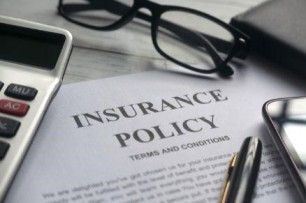
The updated terms and reforms in the insurance industry you need to be aware of
Every industry undergoes some reform from time to time. This can be due to various reasons- changes in the country’s economic conditions, level of crisis, the impact of international and national markets, contribution to the nation’s GDP (Gross Domestic Product), budget regulations and much more. Several types of insurance act as investment plans, help you in a financially stress-free emergency, provide tax-saving benefits, and ensure a secure future for your loved ones and dependents.
Does the insurance sector undergo changes and reforms on a large scale too? The answer is yes. The premiums, terms and conditions, age limits, benefits, renewal, etc., are reviewed and revised when needed. This ensures that the insurance matches pace with the current economic conditions, the situation in the market and the demands of an existing and potential set of customers. And if you are someone who has purchased insurance policies or is planning to explore your options in the sector for all the good reasons, you need to stay updated with the changes.
This blog will discuss the revised terms and reforms you need to be aware of in the insurance industry. So, let’s get started!
The pandemic caught the eyes of the insurance sector reforms:
The covid-19 pandemic brought the entire world to a very unexpected halt. Given the pace of development and technological advancement, the pandemic situation across the globe was beyond the people’s and government’s imagination. While people were under lockdown, several opportunities opened up, and many sectors, mainly fintech, saw massive growth. In the insurance sector, which is majorly categorised into life, health and general insurance, the FDI (Foreign Direct Investment) limit is increased to 74 per cent from 49 per cent as per the new Insurance Amendment Bill 2021 passed in the Indian Parliament.
This was primarily focused on getting more foreign investments onboard. Why? The insurance sector is considered a good investment option. It is a capital concentration with a long development period. It takes at least seven to ten years to start making profits apart from their regular budget, retention and expenditure.
What does the FDI reform ensure:
The FDI reform discussed in the previous point will open up multiple avenues for investment in the insurance sector. This will significantly aid them in growth and expansion, even overseas. The whole loop continues and might attract more foreign interests, thus helping them flourish economically, eventually providing new features and insurance options for the customers such as
1. Pay-as-you-use motor insurance plan has now been ideated into the motor insurance framework. This would enable the customers and policyholders to reduce their premiums as per reduced coverage by availing of the switching on and off options.
2. Health insurance plans have been customised to comprehensively understand the needs of people during stressful times of covid. The comprehensive health insurance policies have incorporated mental health issues, covid-19 problems, modern procedures and treatments, etc.
Health insurance providers have been permitted to raise or reduce the health insurance policy premiums by almost fifteen per cent after three years. This is considered a significant reform in the health insurance sector and the pricing of these policies.
Some other reforms were accomplished regarding insurance awareness programs to ensure that people from the remote sectors of the country know the benefits of insurance policies and can avail a secure future, introduction of digitalisation of KYC and verification processes for the convenience of the existing and potential customers, 24*7 online help assistants, etc.
These were some updated terms and reforms you need to be aware of in the insurance industry. Insurance coverages help secure a financially stress-free situation when you encounter unprecedented circumstances that can endanger your health, assets or life. So, a wise option would be to explore all your options from the comfort of your home and buy insurance policy online that would cater to your needs in the best ways possible.
Click HERE to know more about how you can buy insurance policy online.
Disclaimer: The information provided above is for illustrative purposes only. To get more details, please refer to policy wordings and prospectus before purchasing a policy.
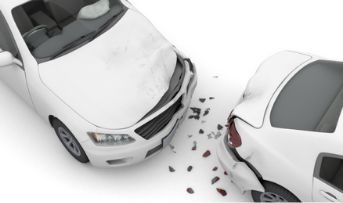
Know more about tailgating and ways to stop it
Have you ever been driving around and seen someone cutting it too close to your car's bumper? If yes, you are familiar with tailgating. For those unaware of the term, tailgating happens when there is insufficient space between your car and the one in front of you or behind you.
The likelihood of a collision increases with just one forceful brake from the vehicle in front. Tailgating increases the risk of accidents, making it essential for car owners to protect their vehicles. Also ensure that you avail of online motor insurance renewal services offered by your preferred insurer.
While insurance can help you safeguard your vehicle and yourself from financial contingencies, here are some tips to prevent tailgating.
What are the risks of tailgating?
A significant risk of tailgating is that drivers do not provide adequate space to stop if the vehicle in front suddenly decelerates which more likely makes a rear-end collision. A multi-car pileup that starts with one rear-end accident is expected to spread. Accidents involving a rear-end often result in neck and back injuries.
Another risk of tailgating is that it can create pressure on the vehicle's driver in front to apply the brakes to dissuade the tailgater. When the front driver performs what is known as a brake check, an impending collision may result if the foot is held down for even a brief period. In the worst case, brake inspections can also spark road rage among tailgaters.
Ways to prevent tailgating.
Driving too close to the car in front is the main reason for tailgating. Maybe you're upset or impatient and hurried. Whichever one it is, tailgating puts you and other drivers in danger every time.
Here are some tips to help you maintain a safe distance.
1. Understand the distances you often stopover:
The variation depends on how quickly you're moving. You might get into problems if you can't stop in this amount of time. Remember that stopping distances increase in wet circumstances, so be cautious and give the car in front of you enough room. You should raise the spacing by up to 10 times on slippery roads and at least double it in wet conditions.
2. Maintain your calm:
Avoid venting your frustration to other drivers if you feel irritated, furious, or exhausted. Stay at home until you feel better, or pause to unwind and regain focus before resuming your driving. It costs nothing to drive courteously and makes everyone's journeys safer.
3. Make use of your car safety features:
Nowadays, many vehicles feature collision warning systems that warn drivers if they approach the car in front too closely. Utilise such devices, but don't entirely depend on them. Always follow the road regulations rather than pushing your car's technology to its limit.
Driving is a skill that requires significant experience to master. Keeping calm and efficiently managing situations like tailgating is an indicator of an experienced driver. While you may not be able to control other drivers and their behaviour on the road, you can always ensure your vehicle's safety by following the above tips. Also, remember to avail an online motor insurance renewal service or purchase a new motor insurance policy to protect yourself from financial losses due to an accident.
Click HERE to proceed to online motor insurance renewal.
Disclaimer: The information provided above is for illustrative purposes only. To get more details, please refer to policy wordings and prospectus before purchasing a policy.
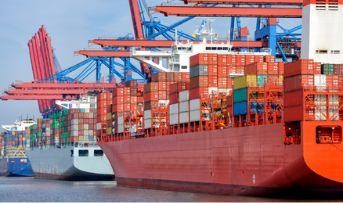
The best tips for choosing a cargo shipping company
A lot of stress surrounds the idea of getting your package shipped overseas. Knowing that your cargo will travel a long distance, you will want it to reach its destination safely.
While sending your package overseas, there are a few crucial things that you should keep in mind to save time and effort. The best thing you can do is look for a reputable and trusted cargo shipping company that will take care of your package. If you're sending a cargo for the first time, then there are several things you must know.
While you plan to ship your cargo, consider securing it with reliable marine insurance. For this, you need to be familiar with different marine insurance companies that offer this insurance at the best rates.
And to help you choose the best cargo shipping company, here are a few tips to make the right decision.
1. Competitive prices:
Pricing is one of the first things to consider when you choose a cargo shipping company. It would help if you did ample research about the average cost of shipping overseas.
In this way, the companies will not be able to scam you into paying more than usual. Consider a company that delivers on time and takes full responsibility for the goods to reach safely.
2. Delivery timeline:
The delivery timeline is also very important whenever you ship a package overseas. It can take days, weeks, and even months to reach your desired destination. Before you choose a company, enquire about their delivery timelines and make sure they are reliable and intact. The arrival of the package on the estimated date is significant.
3. Safety:
It is always wise to opt for a cargo shipping company that has been registered and procured a business license and permission from the concerned government authorities. Make sure to research it in advance, so you do not lodge yourself in a possible scam later. Try and track down customer reviews and feedback as well. Your package will be valuable and worth thousands of rupees. Safety is essential and it should not be compromised in any way.
4. Reliable insurance:
Your package should have good insurance to back up its security. Go for marine insurance companies that provide comprehensive and hassle-free coverage for your cargo package. This ensures that you get compensation, if things, unfortunately, go wrong.
5. Tracking:
Before you choose any cargo company, ask them about tracking mechanisms. In this way, you can follow the whole movement of your package through live tracking status. Your cargo shipping company should provide you with the tracking details. If it doesn't, avoid choosing that company.
6. Customer care:
Every cargo shipping company should have a functioning and active customer care service to answer all your queries related to the shipment. Make sure that you do a thorough background check on the company you are choosing. Select a company with an active customer service with 24/7 support.
When you invest your valuable time, effort, and money in sending the parcel to your family or friends, you always expect it to reach them safely and on time. These tips should be your priority when choosing a cargo shipping company for your goods. Additionally, it would help if you purchase insurance to cover the financial loss if your cargo gets damaged due to mishaps. Research the top marine insurance companies that offer relevant insurance for all your needs, compare their policies, understand the terms, and then make a final decision.
Click HERE to know more about marine insurance.
Disclaimer: The information provided above is for illustrative purposes only. To get more details, please refer to policy wordings and prospectus before purchasing a policy.

What is the importance of enrolling in a self-defence class
In a world riddled with war and crime, it is always good to know that if need be, you can defend yourself. With active crimes rising daily, it is best to have some tips and tricks under your belt to protect yourself and your loved ones. One way to ensure your safety is by enrolling in self-defence classes. There are various kinds of self-defence methods that you can practice, such as karate, krav maga, boxing, judo, etc.
Choosing the one that best suits you and piques your interest can make learning more enjoyable. People have professed the importance of self-defence for women and children, but what is important to remember is that self-defence is for everyone.
This article will examine the importance of self-defence classes and why you should consider enrolling in one.
1. It helps your physical form:
One of the most crucial elements of self-defence is timely reflexes. If you are put in a dangerous situation, your mind and body should manage to work in sync. You can only achieve this with practice. Training can help you inculcate the necessary conditioning and helps you with a better fight or flight response.
Your body prepares for an adrenaline dump with the right amount of practice. Adrenaline dump is a reaction the body goes through in case of unprecedented dangers. Since the adrenaline rush lasts only a few moments, it is crucial to act immediately for the best outcomes.
2. Builds confidence:
When people are timid, they tend to undermine their skill set and are incapable of protecting themselves. Self-defence is an excellent way to build confidence and protect oneself in times of need by believing in their skill set.
Being confident helps you defend yourself and leaves a lasting impression on people. If you are aiming for overall development, self-defence can be extremely helpful.
3. Master discipline:
Excelling in any field requires hours and hours of hard work and dedication. The same applies to self-defence. The more hours you put into mastering this art, the better you will get the results.
The urge to improve yourself can drive you to a dedicated routine, which builds a disciplinary lifestyle. So, taking self-defence classes helps you stay focussed, grounded, and more aware of your surroundings.
4. Fighter instinct:
When faced with life-threatening or dangerous situations, it is best to start acting as early as possible. The quicker you are with your thinking, the sooner you can fight through your opponent or potential threats.
The power and the speed of your attack will help buy you some time before the attacker attacks again. You can utilise this time to escape or attack the opponent to keep yourself safe. These seconds can play a vital role in deciding your survival.
5. Makes you more goal-oriented:
Your goals at any particular time can be as small as achieving the perfect kick or as daunting as escaping a kidnap. Upon seeing an improvement in form, you only want to better yourself and make yourself well equipped to withstand any attack. Setting these small goals can significantly impact your form and energy.
These are a few reasons self-defence should be a part of everyone’s life. If you have children, it is best to give them an early start. We are constantly surrounded by news of mugging, killing, robbery, and kidnapping. Preparing yourself and your loved ones for any such thing is the best way to ensure their safety and welfare.
Another crucial way to ensure full protection for your family is by enrolling in personal accident insurance India. Personal accident insurances are the much-needed safety net that gives fruitful results during emergencies. Your insurance provider will help you financially to avoid an unnecessary burden on your shoulders to deal with the situation.
Click HERE to buy personal accident insurance India.
Disclaimer: The information provided above is for illustrative purposes only. To get more details, please refer to policy wordings and prospectus before purchasing a policy.

Best tips to look out for affordable health insurance for critical illness
Critical illness insurance covers serious health conditions that require expensive and long treatment. Such illnesses include cancer, paralysis, stroke, organ transplant, heart attack, coma, etc. The treatment for these illnesses can drain your savings and negatively impact your financial condition.
The recovery is time-consuming, beginning from the detection phase to a myriad of medical tests to surgery and then gradually returning to normalcy. All this will cost us much more than any normal health insurance coverage. This creates the need to have dedicated insurance cover for critical illnesses that are affordable and provide robust protection.
Let us look at the best tips for affordable health insurance plans for critical illness.
1. Comprehensive critical illness insurance policy:
A comprehensive critical illness insurance policy gives us a lump sum amount after we submit the required documents to the insurance company. You can use this sum to pay for the treatment cost, including diagnosis, hospitalisation, any surgery in the process, and the doctor's fees. The sum assured under such policy is fixed. Hence, you can plan your insurance coverage as per your specific needs.
2. Buy it as a rider:
You can buy a critical illness insurance policy as a rider to your existing health insurance policy. Hence you will not need to buy a new insurance policy to get this cover. Also, try to get this additional coverage in the health insurance policy provided by your employer to save money.
3. Low cost:
A critical illness insurance policy does not cost us a very high premium. The premium for such policies is much less than that for your regular health insurance. However, these covers provide us protection only for specific situations. Hence, they should never be used as a substitute for your regular health insurance policies.
4. Compare the premium charged:
Always compare the premium charged for critical illness insurance policies of different companies and select the most affordable one. You can do a detailed online search instead of visiting every insurance company's offices individually.
5. Check for the exact inclusions:
Always check the features and the exact inclusions of the policy because they may vary with every insurance company. Do thorough research and list what the policy does not cover. For example, your policy may state that it covers cancer. But it may also be mentioned in the fine print that it will provide a cover for cancer only after it reaches a certain level of severity.
6. Waiting period:
Look for a policy with the least waiting period. Usually, you can raise a claim for a critical illness after 90 days from the date of commencement of your policy. If you have a pre-existing major disease, the cover may start as late as 48 months from the commencement of the policy.
7. Age limit and benefits:
Always ensure the age limit until your policy provides you with insurance coverage. This will be helpful to you when you cross 60 years of age. There are some companies that provide a lifelong cover. Hence, it is advisable to choose such plans. Also, you should assess the benefits of your policy, such as NCB (No-claim bonus), in case you do not make any claim in a year.
Critical illnesses can result in the loss of your job, partial or permanent disability, and leave you with no source of income. The high cost of treatment can result in draining your pockets as the coverage provided by standard health insurance policies is insufficient for such misfortunes. The solution is to go for the best critical illness insurance policy available. The above tips can help you to choose the most affordable health insurance plans for critical illness upon which you can rely in times of actual need.
Click HERE to buy the best affordable health insurance plans in India.
Disclaimer: The information provided above is for illustrative purposes only. To get more details, please refer to policy wordings and prospectus before purchasing a policy.

The complete guide for people trying parasailing for the first time
Adventure sports have always been the best option for people who call themselves adrenaline junkies. They give you the thrill that knocks out your everyday life's monotony. There are different types of adventure sports, like river rafting, paragliding, bungee jumping, trekking, rock climbing, skydiving, and much more.
In this blog, we'll discuss parasailing, a sport that has created a special bond with adventure enthusiasts. Parasailing is an adventure sport that gives you the joy of sailing in the air while your parachute is towed by a motorboat or jeep. If you plan to enjoy this activity on your next beach vacation, consider this blog for an enjoyable experience.
1. The weather is an essential factor:
The parasailing conditions need to be suitable, and the timing of the day has an effect. Usually, a clear sky and a less windy time are preferred, so most people plan their parasailing trip in the mornings.
2. Get well acquainted with the equipment:
Knowing your parasailing equipment and its functionalities is a must. Even if you cannot understand the mechanics of the equipment in detail, you should be aware of the purpose of the essential tools which will keep you safe. The life jacket is provided to keep you safe if you need to land in water during emergencies.
The body harness helps keep you seated and is joined to the ends of the tow bar. The harness aids in eliminating your discomfort and helping you maintain a balance during sudden movement shifts. And the tow bar is attached to a parachute to help you glide smoothly and land without any significant danger.
3. Get complete information about the restrictions:
To restrict the risks to the bare minimum, the parasailing institutes set certain limitations regarding the prospective client's age, height, and weight for parasailing. These restrictions are also influenced by certain factors, such as the wind level. Still, you must check in with the guide who will help you to avoid any threats to your health and life.
The minimum age limit for the riders is usually around sixteen to eighteen years, and the minimum weight in case there are multiple riders is supposed to be about 150 pounds. But these limitations vary, so check this with your parasailing guide.
4. Your outfit:
Swimming-appropriate outfits help since they are snug and would help if you land in water or experience waves. But anything comfortable is a must, and the bottoms should fit you well so that you are focused on the experience and not distracted by the discomfort caused by your outfit. These experiences are not everyday things, so you better eliminate all sorts of discomfort, stress, and distractions to make the moment count.
5. Research the company:
Read the online reviews about your parasailing company/institute and check their ratings. You must go to the right agency with all security measures intact, trained professionals, quality equipment, and SOPs to take care of their riders. Always ask all the questions to clear your doubts before going in.
6. Carefully listen to the instructions:
Before they put the parasailing gear on, the guide will give you all the information you need, even though you are riding solo or with multiple riders. They will tell you the landing postures, which part of the equipment will help you ride low, high, turn, etc. Always ensure to clarify your doubts before you begin.
That was the complete guide for people trying parasailing for the first time. As we discussed, while adventure sports allow you to experience the unforgettable, they also involve a certain level of danger to your life. Therefore, browsing personal accident insurance plans as a mitigation strategy for unpredictable circumstances is essential. Choose the one that suits you best before planning your adventure trip.
Click HERE to learn how you and your friends can get personal accident insurance plans.
Disclaimer: The information provided above is for illustrative purposes only. To get more details, please refer to policy wordings and prospectus before purchasing a policy.
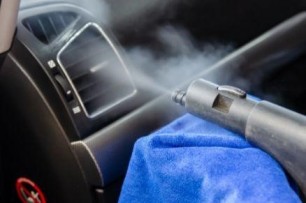
These are the signs that indicate the need to change the AC compressor
With the temperature rising continuously, it is becoming harder to eliminate using air conditioners in our homes, offices, malls, and even our four-wheelers. Imagining life without ACs can be daunting to sustain the heat. Remember that one day when you got into your car, and you realised that the air conditioner was not working? It did feel like you would melt away. Winters are still a bit bearable, but travelling during summers and monsoons without the air conditioner in your vehicle can be an awful experience.
So, how can you predict your car's air conditioner is wrecked? Which part of the air conditioner would you need to change, and how would you know? Don't worry. This blog will discuss all the symptoms of an air conditioner repair.
But first, let's understand a little about your car's air conditioner's compressor:
The compressor is considered the central organ of the entire air conditioner system. Call it the AC's heart, if you will. It helps ensure that the refrigerant is flowing smoothly, which would provide the top performance of the air conditioner. Usually, an issue with the compressor results in low-effective cooling. And not just that, it can be quite dangerous if a compressor has some fault and there's a specific load on the air conditioner. We need to be aware of these signs that indicate the need to change the AC compressor.
1. Low cooling issues:
The first and the only sign you can quickly notice is the level of cooling. Having experienced a smooth performance from your four-wheeler's air conditioners on your trips to the market or work, you will be able to differentiate when the cooling is not that effective. This marks that the compressor cannot regulate the refrigerant flow smoothly, thus needing a replacement.
2. The annoying noise:
You might hear a loud, irritating and unusual noise whenever you switch on the air conditioner in your car. To address the issue, it is usually advised that you replace the entire cooling unit with a better and more compatible one for your car's manufacturing and other systems. Ensuring that your new unit is consistent with different electrical setups in your vehicle will help you avoid any damages that can endanger the car's safety, void the warranty of various systems, and violate the rules and regulations.
3. Clutch troubles can be experienced:
Faulty air conditioner compressors can cause issues with the clutch. It might seize or break, which ultimately indicates a power issue, and the compressor cannot access sufficient power from the engine.
4. Check the air vents:
Even if the compressors of the cooling unit of your car are faulty, you still need to ensure whether or not the air vents are clear for the air to flow without any obstructions. Clogged air vents can cause a disturbance in the smooth airflow from the air conditioner, thus lowering the levels of effective cooling inside the car. Clean the air vents and check again. If there is still an issue, the air conditioner's compressor must be checked thoroughly and replaced.
5. Fuse box examination:
Before deciding to go ahead and replace the compressor or the entire cooling unit, check the fuse box properly. While a faulty compressor is the cause of leaks in a refrigerant or low cooling, examining the fuse box leaves you with no second thoughts about changing the compressor.
Replacing the entire cooling unit and other repairing and servicing costs can be a substantial financial burden, even more so when you land in unfortunate circumstances that might cause severe damage to your car. Get a car insurance to avoid financial stress and ensure the longevity of your four-wheeler. You need the best car insurance which would serve your needs in the most efficient ways. Explore your options and do not delay buying reliable insurance to safeguard your asset against unfortunate events.
Click HERE to know more about the benefits of car insurance.
Disclaimer: The information provided above is for illustrative purposes only. To get more details, please refer to policy wordings and prospectus before purchasing a policy.

Guide on single-lane driving for beginners
Learning a new skill and mastering it can be challenging and time taking. The same applies to car driving. Beginners first need to understand the various functionalities of a car. Then they take time to build and sharpen their road sense. Furthermore, they need to constantly practice to hone their driving skills.
However, driving on a single road can be a new game for many. Beginners will especially face challenges adjusting themselves to the single road. If you are a novice driver and wish to learn the tips to drive efficiently on a single-lane road, here's our guide to help you get started.
1. Acquaint yourself with the car:
The first thing any beginner should do is thoroughly acquaint himself with his car and its features. Cars have different gear patterns, and the responsiveness of the clutch and brakes also differ from one car to another.
Single roads usually have much heavier traffic than double-lane roads. A beginner should understand how his car responds with the press of the accelerator, brake, and clutch. Applying all three must happen in a rhythm. This understanding is essential to help beginners drive and maneuver their cars effectively through the traffic and potholes on single roads.
2. Traffic rules and road signals:
A beginner should familiarise himself with the prevalent traffic rules. This will help you save money by way of fines and penalties. You should also be familiar with the different signals and signboards put along the roads and indications used by other drivers. If speed breakers are approaching, you should lower your car's speed by seeing the board of "speed breakers ahead" on the roadsides.
Also, you should know that if a vehicle approaching you on a single road is flickering its headlights, it means that the driver wants to pass first. These factors will avoid unnecessary traffic jams, inconvenience, and the possibility of an accident.
3. Correct seating position:
You should adjust your driving seat according to your height and comfort. You should be in a comfortable position to easily access the car's pedals. Also, the seating position should help you maintain good posture so that you do not develop strains or backaches while driving through the busy single lane.
4. Slow speeds:
As a beginner, you should avoid driving fast or carelessly. Slow driving on a single road will ensure you fully control the car. Generally, the traffic in peak hours on a single lane is heavy, so drive with caution. Always Keep your eyes peeled to help you reach your destination safely.
5. Maintain safe distance:
Maintaining a safe distance from the car or vehicle in front while driving on a single road is essential. Due to the heavy traffic, vehicles brake suddenly on such roads. There will be no space to swerve and change lanes on a single road. Hence, the chances of an accident increase.
6. Take a double-lane road where possible:
As a beginner, you should always look for an alternative way to reach your destination by taking double-lane roads wherever possible, even if you have to cover a few extra kilometres.
7. Avoid driving at night:
Beginners should avoid taking a single road at night unless it is very necessary. This is so because the beam light of the car coming from the opposite direction often makes it difficult for beginners to see clearly. This problem is more severe on single roads as the space between cars is very less.
Summing up the entire discussion, we conclude that beginners should tread with extra caution while driving on single roads in India. People tend to drive as closely as possible to other vehicles in traffic, which can be troublesome for beginners. Fret not! Follow the above tips and be confident in your driving skills, practice traffic rules, and maintain lane discipline.
It is also essential for you to have valid car insurance as it is mandatory by law. Secondly, a good car insurance India plan will protect you against any possible damage while driving and compensate you for the repair and maintenance of your car.
Click HERE to buy a reliable car insurance India policy.
Disclaimer: The information provided above is for illustrative purposes only. To get more details, please refer to policy wordings and prospectus before purchasing a policy.

Consider these factors while purchasing cancer health insurance
Cancer is one such illness that affects the patient and their family emotionally and mentally. According to recent studies, cancer rates are alarmingly increasing day by day. It can happen to anyone, irrespective of age, health, or lifestyle. Keeping these increasing numbers in mind, getting health insurance to manage expensive cancer treatment is ideal. Moreover, many insurance companies offer easy and quick health insurance policy renewals to avoid complications and get you financially protected.
Factors to consider when purchasing a cancer health insurance.
There are a lot of insurance plans in the market, which makes it confusing to find the right insurance company. It is important to purchase the right policy that matches your requirements to get the desired benefits in the event of a need. Understand that not just buying but timely cancer health insurance policy renewal is the best way to remain financially protected.
1. Type of policy:
Look for insurance policy features that specifically meet the needs of life-threatening diseases like cancer. You can also buy a cancer coverage add-on with your original health insurance policy or opt for the critical illness insurance policy that covers expensive medical charges.
2. Policy coverage:
Cancer treatments can jeopardize your lifelong savings. While some people can bear these expenses, some take out heavy loans to cover them. Thus, choosing a maximum sum assured and policy coverage is ideal. Also, look for an insurance provider that offers quick and hassle-free health insurance policy renewal.
During the critical cancer stage, you may be unable to work and provide income to the family. Therefore, ensure that your plan offers sufficient money to cover your lost income and medical expenses.
3. Waiting period:
Keep in mind that every health insurance plan comes with a waiting period. The waiting period for a particular disease can differ from one insurer to other. You may not be able to claim the medical expenses till your policy comes into force. Therefore, look for policies with shorter waiting periods or quick health insurance renewal to avoid increasing costs.
4. Prior medical history:
You may not know, but most insurers do not offer cancer coverage to those with a prior cancer history. Thus, if you have already survived cancer, your application has a chance of being rejected by the insurance company. Thus, disclose all health-related information with the insurance company when you buy a health insurance policy or consider health insurance policy renewal.
5. Insurance company:
Besides looking at the policy offerings and benefits, choosing the right insurance company is essential to ensuring a smooth purchase and claim settlement experience. It is recommended to check the insurance company's online reviews, customer support, claim settlement ratio, etc., and then choose the best policy.
6. Premium:
Another important factor to consider while purchasing cancer health insurance is the insurance premium. An insurance broker may offer maximum benefits, but if the insurance premium is out of your budget, all of these things do not matter. You must think twice before purchasing or considering health insurance policy renewal if the premium is out of budget.
While many want to avoid such dreadful illnesses, preparing yourself and your family for the worst is always a wise decision. Therefore, purchase or ensure regular health insurance policy renewal today to secure your tomorrow.
Click HERE for health insurance policy renewal.
Disclaimer: The information provided above is for illustrative purposes only. To get more details, please refer to policy wordings and prospectus before purchasing a policy.
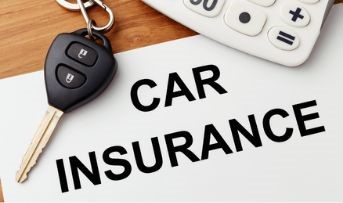
Here’s why the least-priced car insurance may not be a worthwhile investment
Imagine you're out with your car for some work, and suddenly another over-speeding vehicle rams into your car from behind. A scary situation, isn't it? Worrying about the damages is not a concern if you have the right protection. Car insurance is the immediate step you should buy to ensure that you are compensated fairly and stay financially stress-free.
When you begin choosing insurance from the options available, you always look for competitive premiums which are affordable and fully effective. Although you can get substantially low car insurance policies, you will not be able to enjoy all the benefits and features.
Let's have a detailed look at why you should not opt for the least-priced car insurance.
1. Unavailability of essential benefits:
The least-priced car insurance often strips you of the major benefits. Not all expensive insurance policies need to offer you all the benefits, but the least-priced ones offer you none. For instance, it may not even cover accident costs if someone else is driving the car at the time of an accident. Some insurance companies very cleverly offer you a low premium to attract you to their insurance policies. You must properly inspect your policy before determining the one you want to buy.
2. Impacts policy coverage:
The cost of the car insurance policy is directly proportional to the level of coverage it provides. If your insurance is cheap, the coverage will be lower too. There might be third-party insurance involved, which requires the protection against damages to the third party. You can be accountable for major crises in terms of losses or damages.
3. Lack of cashless claims:
If your insurance policy is cheap, you may not be able to enjoy cashless claims. This means that you will not be able to avail the facility of getting your car repaired in a garage that falls under your insurance. Under other circumstances, you will not be required to pay any money from your pocket. But with cheap car insurance, you are forced to pay for the damages before you apply for a claim.
4. Unsatisfactory customer service:
It is a known fact that the reputed insurance agencies ask you for a premium which is justified. This means that you will receive top-notch and priority treatment as a customer. You will be given the best support and care by the customer service of your designated insurance company. They will pay attention to all your complaints and resolve them on priority. In the case of cheap insurance, you will face unsatisfactory responses to your queries. Always keep that in mind.
5. Greater deductibles:
A deductible is a partial amount paid by the policy owner during the settlement of an insurance claim. With this feature in your car insurance policy, you need to pay a small deductible for your claim. However, for the least-priced car insurance, you need to pay a larger amount as deductibles. Only after the payment, you'll get the claim amount. This is how they loop you in for trouble. Always ensure that you read your documents carefully and ask all the right questions.
These points are enough to evaluate decently priced car insurance instead of a cheap one. Always make sure you explore all your options and purchase the best car insurance, which would cater to all your needs in the best way possible. By saving a few bucks today, you risk losing a lot of money tomorrow. Hence, choose wisely while getting car insurance to protect your car against hefty damages in unfortunate situations.
Click HERE to learn more about the benefits of car insurance and the process of determining the best option for you.
Disclaimer: The information provided above is for illustrative purposes only. To get more details, please refer to policy wordings and prospectus before purchasing a policy.

Are you an IT professional? Here's why health insurance is vital for you
The career prospects for IT professionals in the post-pandemic recovery provide immense opportunities in the fields such as eCommerce, Fintech, Artificial Intelligence, Augmented and Virtual Reality, and many others.
But with such a promising career option, IT professionals have high stress because of their work-related anxiety, strict timelines, night shift, and overwork load. It has become more about surviving as an employee and earning enough. And as a result, there are different impacts of such long work hours on their lifestyle. You begin to compromise on your health which is not a wise option. Being mindful of your health and preparing for the inevitable consequences would be best. Are you an IT professional? Let’s understand why it is essential for you to invest in a comprehensive health insurance plan.
1. Impact on your lifestyle:
We have seen multiple headlines about people getting heart problems, backaches, constant headaches, eye problems, and joint pain at a young age. While some of such cases can be due to underlying genetic conditions and other reasons, a significant chunk of youth is still at risk due to developed lifestyles. The stress levels you operate at, the pollution, the food you eat, work schedules, sleep cycles, undisciplined workout routines, excessive gadgets use, etc., are a few causes of your sedentary lifestyle.
Getting health insurance will allow you to cope with any repercussions you might face due to such a schedule. It helps you stay prepared and cover all costs of routine health check-ups. This way, you can stay informed about the fluctuations in your body and take appropriate and informed measures to solve the issue.
2. Fluctuations in the medical industry:
Inflation comes in all forms, and its effects do not spare any particular industry. The pandemic was an evident example of how the medical industry was on its toes and the primary source of survival. The advancement in technology has brought several developments in the medical world.
But this also ensures that the costs of treatments will rise depending on the level of equipment and machinery, accessibility, and the procedures involved. Even the basic expenses such as tests, consultation charges, ambulance costs, etc., will rise significantly. Getting health insurance will help you cover these costs for a more extended period to avoid the financial burden of being a salaried employee. This way, you can efficiently manage your finances and control your expenses simply by investing in a reliable health insurance plan.
3. Taking a step forward from the employee’s health cover:
Most companies offer insurance coverage for their employees and their immediate dependents, which assures that the employee has something to fall back on in case they find themselves in such medical emergencies.
But often, these insurance coverages are insufficient to cover terms of critical illnesses, the sum insured, add-on coverage options, or the time. In such cases, it is advised for you to purchase health insurance that has been customised according to your needs and provides coverage in every which way possible. This will always help you avail the benefits entirely at the right time.
Health insurance helps you safeguard your savings, and the earlier you get insurance, the more you can stay secure and ahead of such unfortunate situations. Explore all your options and purchase the best health insurance which caters to your needs in the best ways possible. Smart investments made during your 20s will help you reap the benefits at the need of the hour.
Always keep your policy up-to-date and adapt to practices like consuming a healthy diet, having at least seven hours of sleep, regular exercise for 10 mins, and meditating at home. At the workplace, take frequent breaks and stay hydrated to feel active and energetic throughout the day.
Click HERE to know more about the benefits of health insurance.
Disclaimer: The information provided above is for illustrative purposes only. To get more details, please refer to policy wordings and prospectus before purchasing a policy.
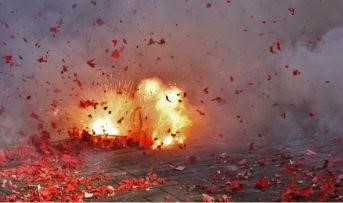
Does car insurance cover damages due to firecrackers? If so, what's the process
Diwali is a time for festivity and celebration. Everyone celebrates it differently; some will enjoy barfis and ladoos, some play cards, and others set off fireworks. While bursting firecrackers is often frowned upon due to the damage caused to the environment, it is still prevalent among a part of the population.
In addition to contributing to pollution, fireworks can be a nuisance to the general population. Imagine the days when you thought a rocket would invade your home.
When you feel frightened in your residence, how do you feel about your parked car in the building or on the road? In a space-constrained city, it is not uncommon for individuals to park their vehicles on the street. Therefore, disregarding the danger of stray crackers inflicting damage on your vehicle during Diwali is impossible.
If your car catches fire by the crackers, will you get insurance? To file a claim, you must first determine whether the risk is covered by your car insurer, as only policyholders with comprehensive car insurance may be eligible to do so. Let's examine the process your car insurance provider might take in this situation.
Does car insurance cover firecrackers damage?
The answer to whether or not comprehensive car insurance covers damage caused by fire is "yes." This feature is subject to a few specific criteria.
For instance, if you have standard car insurance coverage that covers liability toward third parties, it will not cover the damage. However, if you have paid more and opted for comprehensive insurance, the policy will cover incidents of such nature.
You may get all the information concerning the terms and conditions of the plan from your insurance provider. If you prefer, you may look through the insurer's website, call them, or email them to express your interest in learning more about their car insurance policies.
Comprehensive car insurance coverage:
To address this question, it is necessary to take a step back and examine the concept of automobile insurance in India. According to India's Motor Vehicles Act, all vehicles must be insured to be legally driven on Indian roads. Vehicle owners must insure their vehicles with a third-party plan, which covers the owner's obligation towards third parties or properties harmed due to the covered vehicle.
With comprehensive cover, vehicle owners have access to the additional feature. This plan meets the necessary coverage standards (it contains liability coverage) and provides damage coverage. The insurance provider will cover damage to the insured vehicle, which is not the case with a liability-only policy. Comprehensive car insurance covers fire, theft, and natural disasters.
However, for a comprehensive plan, you must pay a higher premium. The compensation for such a plan varies depending on the insurer.
Therefore, it is essential to conduct research and compare plans before purchasing car insurance. The luxury of the internet and smartphones have simplified this process considerably. A few minutes are required for research, followed by quick steps to buy and review the policy's information, and that's it. It is so simple and convenient!
If you have a comprehensive car insurance policy, then you are eligible to claim on your policy. Your claim will be successful if your car catches fire due to firecrackers and the vehicle is damaged beyond repair. It will reimburse you for the total value of the vehicle.
It is vital to note that you may not have a valid claim if your car catches fire, and you can repair it for less than what would be covered by the comprehensive policy. So, this Diwali season, let's invite happiness with the joy of festivity and reliable insurance coverage.
Click HERE to buy comprehensive car insurance to protect your valuable asset.
Disclaimer: The information provided above is for illustrative purposes only. To get more details, please refer to policy wordings and prospectus before purchasing a policy.

Complete guide on getting your dental braces done
Getting energy from food may sound like a straightforward process. But during this process, you must ensure that your dental health stays at the top of its game. Healthy teeth are very crucial. Lack of a proper dental hygiene routine can lead to bad breath, gum bleeding, swollen gums, infection, yellow and brittle teeth, ingesting bacteria and germs, and much more.
What if your teeth are not growing in the regular order they should? There is nothing to worry about. This phenomenon of unorderly growth of the teeth or zigzag pattern of developing teeth is more common than you think. And braces are the best solution to this problem. It is a relatively expensive process. So, you need to be aware of this orthodontic process before you invest your money and go ahead with the rest of the procedure. Do you have doubts about whether or not you should go ahead and get braces? This blog is a complete guide on getting your dental braces done. So, let’s get started.
1. Understanding the purpose of braces:
Braces are one of the most convenient solutions when your teeth are out of their normal alignment. These braces are wrapped around the bone structure of your teeth and apply pressure on them. Eventually, the continuous pressure due to the braces changes the position of your teeth, bringing them into proper order.
2. Criteria for getting braces:
Do you need braces? Your orthodontist determines the answer to this question during your regular check-ups. They will answer all your queries and tell you if you require braces and what problems regarding your teeth the braces would sort out. They will perform a deep examination and inform you about your options, the type of braces that would fit your teeth conditions, and your budget. You can then have a clear conversation with them and determine the option which suits you the best.
3. Are there different types of braces:
To your surprise, yes! There are four significant braces: metal braces, ceramic braces, lingual braces, and Invisalign. Metal braces are the most basic and standard braces which fix your teeth with the help of dental cement. Ceramic braces are a little more convenient and pleasing to look at when compared to metal braces. These braces can be altered to the colour of your tooth enamel, making them less visible and helping you avoid being too conscious about them.
Lingual braces are hard to spot as they are attached to the backside of your teeth which also cause discomfort. But these help if you are too concerned about your appearance. And lastly, Invisalign is customised according to the size, shape, and structure of your teeth and jaw for the perfect fitting. These can help you escape the usual hassle of other types of braces during eating.
4. Frequency of check-ups:
While the whole process can take an hour or two but can differ depending upon the condition of your teeth. You will have to visit your orthodontist frequently to ensure that the braces are functioning correctly, adjusting well on your teeth, not causing any infections due to the material, etc.
Sorting a minor health issue can take considerable money and consume much of your time. But what happens when you land in situations beyond your control and can potentially hurt your health? How will you manage your physical health, mental health, and financial stress?
Getting health insurance is the solution to ensuring that you stay sane enough to manage the whole situation. And you can now do so from the comfort of your home and buy health insurance online. Look for dental insurance under the category and research the plan that will provide the best benefits.
Click HERE to buy health insurance online.
Disclaimer: The information provided above is for illustrative purposes only. To get more details, please refer to policy wordings and prospectus before purchasing a policy.

Tips senior citizens must be aware of to protect themselves from online scams
Online scams have been on a stupendous rise, mainly because of the easy availability of smartphones and internet services. People are increasingly falling prey to unreal promises of big rewards and prizes offered by online scammers working 24x7 and trapping innocent people into their nets. They intend to make quick money by cheating them. Senior citizens are often more susceptible to such frauds as they are unsuspecting and trust people more easily.
Here are a few tips that senior citizens must be aware of to protect themselves from online scams.
1. Educate them:
Senior citizens are usually less proficient with modern technology. Hence, they are at higher risk of being targeted by online scammers for revealing their credit/debit card numbers, passwords, CVV and OTP, etc. The first step is educating senior citizens about the clever tactics and strategies of such online scammers.
They will then know not to trust messages with promises to get a handsome amount as a gift or prize, unreal discounts on products, or share personal information about their bank accounts, insurance policies, enter their personal information into forged or phishing pages, etc. They must be informed that they should never click on any suspicious link or respond to messages from unverified and unknown people.
2. Call blocking:
Several applications are available that help identify the caller and automatically block calls from spammers. Senior citizens should install such applications on their mobile phones so that they know beforehand that the incoming call is genuine or spam. Also, they can block spammers on their phones so they will not be able to call or harass them.
3. Use social media wisely:
Senior citizens should use social media wisely. They should refrain from posting photos and updates that reveal their daily schedule and activities. Scammers often use information you share on social media as a tool to pose as you, befriend your friends and known people and ask for financial help from them. They should lock their profile photo so that scammers cannot impersonate them on social media. Also, they should only accept friend requests from familiar people.
They should always double-check before helping any person financially through social media connections. If they get a message from their friend or relative asking for help, they should call him personally to ensure that the request for help is genuine.
4. Ask for help:
Senior citizens should never hesitate to ask for help from others if they feel that they are being targeted or have become a victim of an online scam. Scammers are talented and may ask them to act quickly to benefit from the limited-time deal. Also, they may threaten them with bank account blockage or closure if they do not share their important card and bank details.
Senior citizens should call their family members immediately and tell the situation correctly. Also, they may contact the respective call centre to verify the claims of the scammer before acting on them.
5. Reliable anti-virus:
Senior citizens should use strong anti-virus software so that their device is not affected by viruses, malware or spyware sent by scammers or hackers. They must configure their devices to download updates regularly and install them to keep them up-to-date.
Senior citizens should be thoughtful and proactive to protect themselves from the menace of online scams. They should be aware of scammers active in the field of insurance, telemarketing, and banking, etc.
Senior citizens should opt for a theft protection insurance to cover themselves from such thefts and fraud. It will protect them against all types of theft, including fraud and embezzlement.
Click HERE to buy a theft protection insurance to stay protected from online scams.
Disclaimer: The information provided above is for illustrative purposes only. To get more details, please refer to policy wordings and prospectus before purchasing a policy.
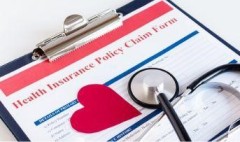
Do you have multiple health insurance policies? Here are some tips to handle them
Individuals nowadays may have multiple health insurance policies in the form of a corporate plan, a separate individual cover, a family floater cover, and a critical illness cover. The need for multiple policies arises because of rocketing hospitalisation and treatment prices in the present times. One policy may not provide adequate cover at the time of need. Also, when you leave your job, the corporate cover will end with it too.
It may confuse any individual to handle multiple health insurance policies, especially when raising a claim. Here are some tips for handling multiple health insurance policies.
1. Choice of policy:
When raising a claim, an insured has no compulsion to use any particular health insurance first from his multiple policies. You can choose any of your policies to raise a claim. Remember that you cannot file a claim for the same expense from two policies.
It is advisable to choose the insurance coverage provided by your office first. The claim settlement process will be quick without any waiting periods, and the chances of rejection of your claim will be very less. Also, your personal health insurance policy's NCB (No-claim bonus) will stay intact.
2. Room-rent limit:
Many health insurance policies come with a room-rent limit. Any extra room rent will have to be borne from our pocket. Hence, use the policy with a high room-rent limit first.
3. Co-payment or deductibles clause:
Many health insurance plans have a co-payment policy in which the insured has to take care of the claim amount. In deductibles, the insured must also bear a part of the claim amount, which the insurance company will reimburse. Hence, use the policy first, which comes without these clauses. This will not put any undue financial burden on your pocket.
4. Reimbursement limit:
Health insurance will cover your medical bills only up to the policy amount or the sum insured by you. If your medical bills are more than the sum insured, you can file a claim for the remaining medical bills with the second health insurance policy provider.
However, in this case, the hospital may not permit you to use the cashless mode to settle the remaining bill amount. You must clear the remaining bills and submit a reimbursement claim for your expenses with your second insurance provider. Also, you need to submit proof of the portion of the bill settled by the first insurance company along with the other relevant documents.
5. Raising claims with two insurers:
We cannot submit the same claims with two health insurance companies simultaneously. If the hospital bills are expected to go higher than the sum insured with the first insurer, then only you can ask for reimbursement for the remaining amount from the second insurer.
6. Disclosure:
We should always disclose our existing health insurance policy details to the insurance company while buying a second cover. Non-disclosure of previous policies with any health insurance service providers can lead to the rejection of our claim at the time of need. It will be considered a violation of the insurance contract.
Multiple health insurance policies are always beneficial for an individual. We usually get corporate cover as a part of our employee benefits, but it may not suffice. We should always go for additional health insurance coverage so that our existing coverage does not fall short in times of need. Also, specialised health insurance policies, such as critical illness policies, are always advisable and suitable for regular coverage.
Click HERE to buy the best health insurance policy.
Disclaimer: The information provided above is for illustrative purposes only. To get more details, please refer to policy wordings and prospectus before purchasing a policy.

Best hacks to make train journeys cheerful
Train journeys can be quite a daunting experience for inexperienced travellers. From bustling crowds on the train, the noisy co-passengers, and the hustle of vendors, it is an adventure all in itself.
The style of travel in the Indian railways greatly differs from other countries such as Spain and Japan since these trains cover longer distances with many stations to halt. Due to this slow nature, train journeys can sometimes get stressful and monotonous. This blog aims to change just that and show you how to make this journey exhilarating and cheerful.
1. Stunning views:
Going for a long journey across the country by railways gives you a glimpse of the best interiors of India. The extraordinary views of mountains, valleys, rivers, and deserts are all sceneries you might not get to see elsewhere. Even the stark differences between the noisy cities and the calm villages can be a mesmerising experience. Try to get a window seat to experience the countryside landscape.
2. Show off your photography skills:
If you're someone who loves to capture moments on camera, train rides are the perfect opportunity to take some swoon-worthy photos. With so many people around and several activities going on, train journeys have so much to offer. Make sure you keep the camera in an accessible range not to miss any memories.
3. Treats and snacks:
Flavourful food is part and parcel of India, and train rides should be no exception. Although the railways have their canteen, the food there might not be up to the mark in terms of taste. It's best to try out different snacks from each state you stop at. It is advisable to trust your instinct with the food, though, because having food while travelling doesn't suit all. Stomach problems are extremely uncomfortable during a train ride, so eat light and less oily. If you have a sensitive stomach, it's best to bring snacks from home to munch on.
4. Be prepared for friendly conversation:
Indians are some of the friendliest people on the planet. One of the most heart-warming experiences is to share life stories with varied people from all different cultures, states, and walks of life on the train. A quick game of cards or other fun activity can help you be friends with your co-passengers and pass your time cheerfully.
5. Books:
If you're not much of a conversationalist, it will be more enticing to take a book with you on the journey and read it as the train is hurtling down the tracks. Looking at the beautiful scenery outside and reading a book can be a meditative experience.
6. Carry your gadgets:
If talking to random strangers about their life does not sound like your idea of fun, you could plug in your earphones and get lost in that movie that you have been meaning to watch for a long time but couldn't get the time. Or you may close your eyes and listen to music that will keep you energetic and sane throughout the journey.
7. Catching up on sleep:
Sometimes, the one thing that gets ignored in the hustle of travel is a good night's rest. Get a comfy pillow and blanket with you and get your sleep. Better the sleep, the better you will be the next morning.
8. Have you thought about insurance:
Although train rides are safe to travel, emergencies and mishaps come uninvited. Investing in personal accident insurance plans is advisable to add a protection layer to your train travel.
Any traveller can attest to the fact that travel is an eye-opening experience. It allows you to broaden your mind and makes you privy to many new experiences. But safety should always be the topmost priority of any traveller. As the uncertainty can be stressful, rest assured by researching suitable personal accident insurance plans and travel without worries.
Click HERE to know more about personal accident insurance plans.
Disclaimer: The information provided above is for illustrative purposes only. To get more details, please refer to policy wordings and prospectus before purchasing a policy.

How can you benefit from buying health insurance online
A sound health insurance policy is paramount in the present world because health-related risks are constantly rising, and so are medical costs. You can buy a health insurance policy through the tried and tested method of using an agent's services or visiting an insurance company nearby your place of convenience.
However, did you know that we can benefit more from buying the best health insurance policy in India online?
Let us have a look at these benefits.
1. Multiple options:
This is one of the most important benefits of buying a health insurance policy online. You can browse a myriad of options a company offers and then compare it to similar policies of many other companies. Hence, you can shortlist the right policy meant for you based on the required coverage, benefits, and premium amount.
2. Convenience:
Imagine the hassle of visiting the offices of multiple insurance companies and going through the details of their policies sitting there! Buying a health insurance policy online saves you from this hassle and eliminates the involvement of intermediaries. You can conveniently go through various policy options online from the comfort of your home and with the convenience of completing the buying process in just a few clicks. It is easy, convenient, and accessible 24/7.
3. Cutting away middlemen commissions:
No middlemen or agents are involved when you buy a policy from online portals. Hence, online purchasing the best health insurance policy in India helps you save substantially on the premium amount.
Also, agents tend to put pressure on you to buy a particular company's policy to earn higher commissions on the same. Buying a health insurance policy online does away with this pressure. You can freely buy any policy of your choice after properly comparing available options.
4. Inexpensive:
Technology and automation help insurance companies operate online with less workforce and low administrative expenditure. Hence, they are in a position to save a lot of money on operation costs.
To encourage more customers opting online policies, a part of this saving is passed on to their consumers through lower premiums. Hence, the customers enjoy a lower premium than what offline channels offer. It is a win-win situation for both the insurance portal and the consumers.
5. Transparency:
Agents often hide facts and information about restrictive clauses in a policy, so you do not deviate from buying it. However, this is not possible when you buy a health insurance policy online.
Every policy has restrictive conditions about its coverage, claim settlement procedure, etc. You can go through the terms and conditions of the policy in detail on the portal before buying it. This will save you from a lot of trouble that may arise in the future due to incomplete information and hidden clauses.
6. No geographical barriers:
Buying a health insurance policy online helps to eliminate geographical barriers. You can select the best health insurance policy in India, even if you reside in any remote area or village, without the presence of the physical office of the insurance company. Hence, your choice is not restricted due to your location.
7. Time-saving:
Buying a health insurance policy online will help you save time. You do not have to take out time separately from your hectic schedules to meet an insurance agent or visit the offices of multiple insurance providers.
We can easily conclude that buying a health insurance policy online is better than buying it through offline channels. Buying insurance should look like an effortless activity with less stress about finding the right deal with multiple benefits. Be the decision-maker of your investment by opting for an online method of buying the best health insurance policy in India.
Click HERE to buy the best health insurance policy in India.
Disclaimer: The information provided above is for illustrative purposes only. To get more details, please refer to policy wordings and prospectus before purchasing a policy.


